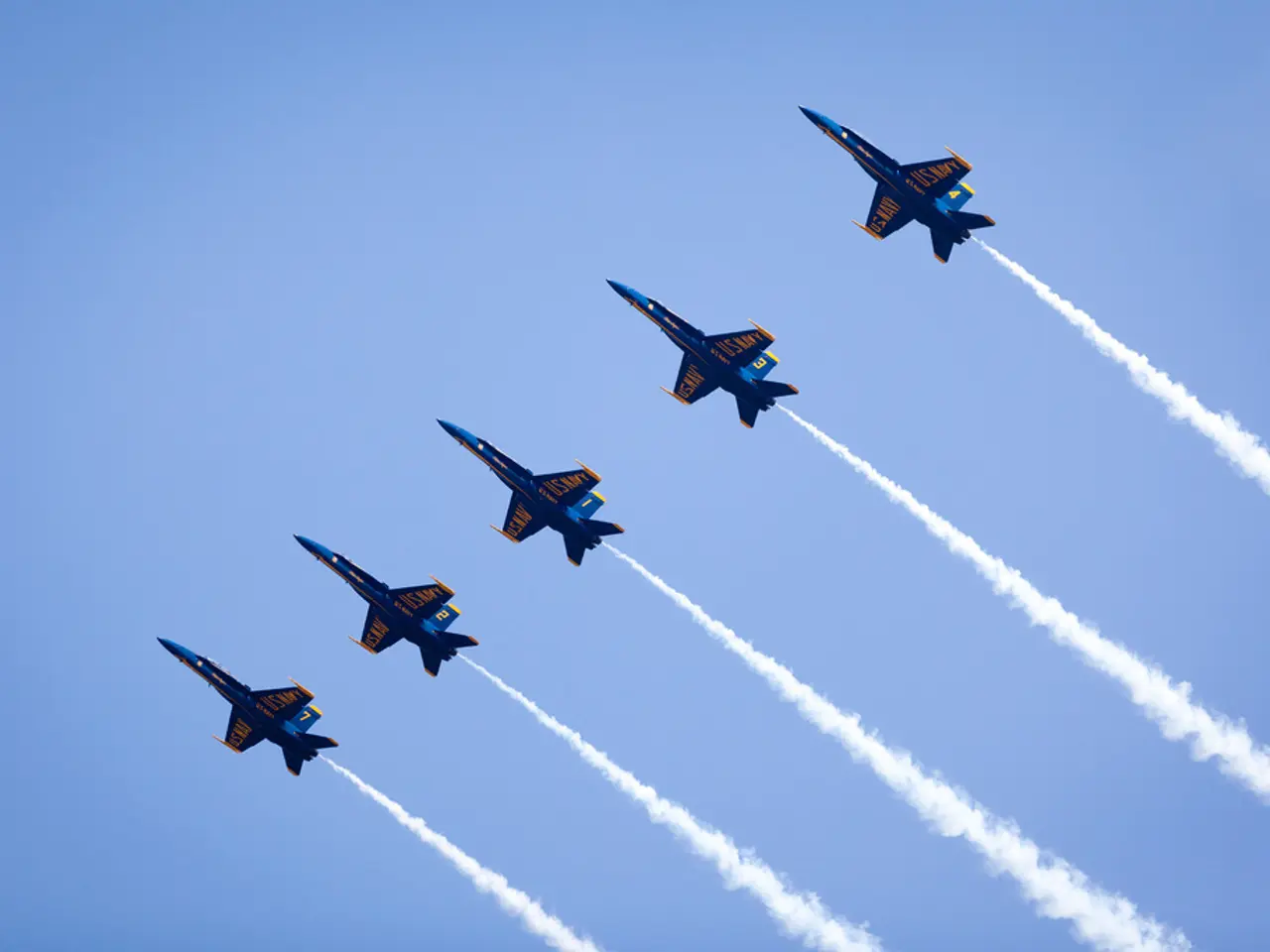Airline sector's carbon equilibrium: Necessity for eliminating fuel-consuming strips
In the skies above us, contrails - those white streaks left by aircraft - may seem harmless, but they play a significant role in aviation's contribution to climate change. These trails, formed by a combination of low temperatures and high air humidity, can persist at heights of 8-12 kilometers for several hours and form high clouds known as contrail cirrus.
Contrail cirrus clouds, composed of tiny ice crystals, are particularly climate-effective. They account for the largest share of aviation's climate-damaging effects, contributing two-thirds to its overall impact. This is because these clouds trap heat in the atmosphere, leading to increased global warming.
However, there are steps being taken to mitigate this issue. The Deutsche Luft- und Raumfahrt (DLR) has been leading international research on potential solutions for reducing contrail formation for years. One such solution is the use of Sustainable Aviation Fuel (SAF), which can be produced from waste, plants, renewable energies, or "green" hydrogen obtained from wind power (E-Fuel).
SAF offers several advantages. It can reduce the climate impact of contrails by up to 26% as shown in global climate model simulations. Additionally, SAF produced without cyclic hydrocarbons (aromatics) leads to less soot in emissions and smaller contrails.
The use of SAF in commercial air traffic is set to increase. A mandatory blending of 5% SAF in flights in Europe from 2030, and a gradual increase to 63% by 2050, has been proposed.
However, it's important to note that changing altitude to avoid contrail formation requires careful consideration. While it can prevent contrail formation, it may consume more kerosene and produce more CO2, potentially reducing the advantage of reduced contrail formation.
Etihad Airways has demonstrated that optimized altitude and route can prevent contrail formation, with an additional kerosene consumption of 100 kilograms per flight. The International Air Transport Association (IATA) predicts further growth in passenger air traffic in 2025, which highlights the need for more efficient solutions.
Current efficiency improvements are not sufficient to compensate for the growth of air traffic, according to an analysis by the company atmosfair in 2024. This is where research projects like the D-Kult project come into play. Although no information could be found about which institutions are involved in the D-Kult project, it aims to address questions related to changing altitude, such as its impact on airspace safety, capacity, and CO2 emissions.
In conclusion, while contrails pose a significant challenge to reducing aviation's climate impact, the development and implementation of SAF and innovative flight optimisation strategies offer promising solutions. As the aviation industry continues to grow, it's crucial to continue researching and implementing these solutions to minimise its environmental footprint.








